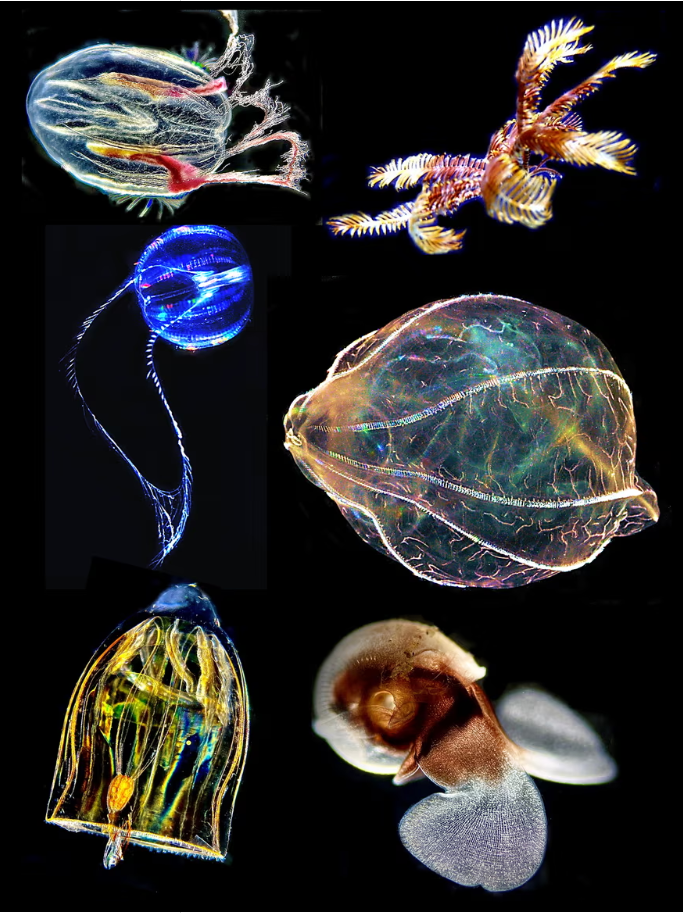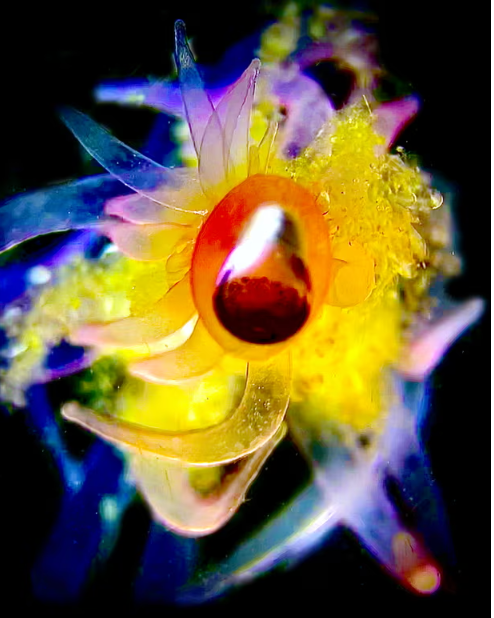“Some marine species do not age, never develop cancer and can regenerate completely when damaged,” says scientist
On the west coast of Greenland, a 17-meter sailing vessel navigates through a narrow, rocky fjord in the arctic twilight.
In a very interesting report theguardian presents the research team, which for 9 days in the Labrador Sea, lowered nets to collect plankton. This is the first time anyone has sequenced the DNA of the tiny sea creatures that live there.
The mission of the scientists to glacial valleys of Greenlandis to classify, observe, categorize and map 80% of the smallest sea creatures to learn more about ourselves and the health of the planet.
The rapid warming there replicates conditions from 600 million years ago, when complex life forms began to appear. “We’re navigating deep biological time right now,” he says.
Plankton and man do not have much in common at first glance. But studying marine organisms has led to innovative understandings about our brains and bodies. Observing the electrical discharges of jellyfish taught us how to restart the heart The slugs showed us how memories are formed. Squid taught us how signals propagate between different parts of the brain. Horseshoe crabs have demonstrated how visual receptors work.
An unusual aspect of Moroz and Molnar’s research voyages is that they are unlocking the secrets of plankton in sailing vessels instead of motorized vessels – and they are not alone in this endeavor.
“Large oceanographic ships can cost $100,000 a day, which can quickly bankrupt a research organization,” says Chris Bowler, an oceanographer at France’s National Center for Scientific Research and scientific advisor to the Tara Ocean Foundation.
For the past two years he has been collecting plankton samples for the Microbiomes mission, a research initiative to study microorganisms in the ocean, on a 33-meter trawler. “Working from a sailboat is 50 times cheaper,” says Bowler.
This cost savings also allows researchers the luxury of time, which is imperative to find the genetic commonalities and patterns that will reveal answers about human health. Bowler says it’s important to analyze and observe these tiny organisms as they interact with each other and the world around them. This can’t happen in a lab back on land because the organisms are too fragile.
Low-carbon, readily available and easier to maneuver close to shore, the sailboats also “don’t vibrate, so you can do really precise work on board,” says Molnar, who captains Ogap voyages of more than 9,000 sailors. miles.
The reason tiny marine life can teach us about our own development is convergent evolution. This happens when unrelated organisms arrive at the same solution to a problem, such as how birds, beetles, butterflies, and bats adapted to fly, but did so at different times and in slightly different ways. Overlapping solutions provide common building blocks for everything from how to fold a protein to how to form a brain.
“Every organism that lives here today is a diary of every adaptation that made it successful,” says Moroz. “The brain is one of the most complex structures in the universe. However, 70% of our knowledge of how the brain works comes from sea creatures. Without them, many of today’s drugs simply wouldn’t existn”.
The brain is one of the most complex structures in the universe. However, 70% of our knowledge of how it works comes from sea creatures.
The reason he studies plankton is because their “log” is the longest – some single-celled marine organisms have been around for more than 3 billion years. That means they have more tricks than us.
“Some groups of these marine species do not age, never develop cancers and can regenerate completely when damaged. They are able to multitask better than us,” says Moroz.
One way to take human medicine to the next level is to take our cues from these organisms. But first we have to recognize them. Ogap’s great mission would not have been possible 10 years ago. Rapid technological advances have reduced the size of equipment, while satellite communications and artificial intelligence have shrunk the time frame for analyzing results from months to minutes.
In Greenland, for example, Ogap kept marine organisms alive for several days on their sailing vessel while sequencing their DNA at various stages of life. “We were able to watch them reproduce, decay, then repair, and even die, all while capturing high-resolution video,” says Molnar.
The team then uploaded the data via Starlink to universities where scientists used artificial intelligence to look for pattern recognition in the organisms’ DNA. “Literally within an hour, we would have results back on the sailboat,” says Molnar. “This kind of work was just science fiction 10 years ago.”
While the technology is new, the use of sailing vessels for exploration is a millennia-old human endeavor.
The key now is to observe the horn of unknown marine organisms before they disappear forever. “By the time you finish your coffee tomorrow morning, between 20 and 100 species will be gone forever, including the wonderful solutions that nature provided, which is a huge loss for biomedical science,” says Moroz.
To continue documenting the wonders of the tiny one-celled sea creatures, Ogap will head next to Patagonia, at the tip of South America. Ultimately, Ogap’s genomic atlas will be digitized and freely available, providing a baseline for marine biodiversity as well as valuable insights for new drug development.
“Every day is a surprise,” says Moroz. “That’s the best part of all these trips – the level of excitement, of discovery. It is so rich. It’s non-stop.”
Source :Skai
I am Terrance Carlson, author at News Bulletin 247. I mostly cover technology news and I have been working in this field for a long time. I have a lot of experience and I am highly knowledgeable in this area. I am a very reliable source of information and I always make sure to provide accurate news to my readers.












